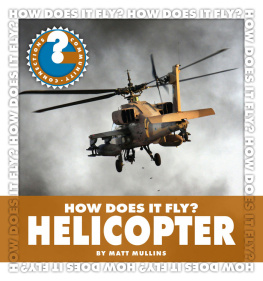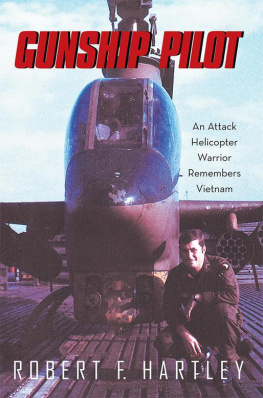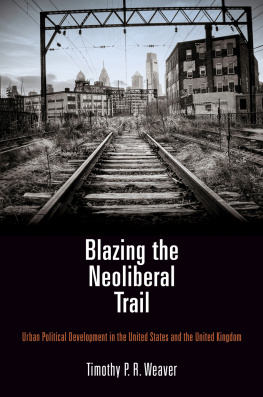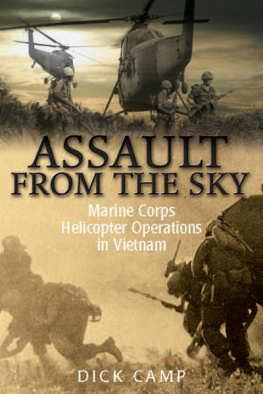Timothy A. Jones - Attack Helicopter Operations In Urban Terrain
Here you can read online Timothy A. Jones - Attack Helicopter Operations In Urban Terrain full text of the book (entire story) in english for free. Download pdf and epub, get meaning, cover and reviews about this ebook. year: 2014, publisher: Pickle Partners Publishing, genre: History. Description of the work, (preface) as well as reviews are available. Best literature library LitArk.com created for fans of good reading and offers a wide selection of genres:
Romance novel
Science fiction
Adventure
Detective
Science
History
Home and family
Prose
Art
Politics
Computer
Non-fiction
Religion
Business
Children
Humor
Choose a favorite category and find really read worthwhile books. Enjoy immersion in the world of imagination, feel the emotions of the characters or learn something new for yourself, make an fascinating discovery.
- Book:Attack Helicopter Operations In Urban Terrain
- Author:
- Publisher:Pickle Partners Publishing
- Genre:
- Year:2014
- Rating:4 / 5
- Favourites:Add to favourites
- Your mark:
- 80
- 1
- 2
- 3
- 4
- 5
Attack Helicopter Operations In Urban Terrain: summary, description and annotation
We offer to read an annotation, description, summary or preface (depends on what the author of the book "Attack Helicopter Operations In Urban Terrain" wrote himself). If you haven't found the necessary information about the book — write in the comments, we will try to find it.
Attack Helicopter Operations In Urban Terrain — read online for free the complete book (whole text) full work
Below is the text of the book, divided by pages. System saving the place of the last page read, allows you to conveniently read the book "Attack Helicopter Operations In Urban Terrain" online for free, without having to search again every time where you left off. Put a bookmark, and you can go to the page where you finished reading at any time.
Font size:
Interval:
Bookmark:

This edition is published by PICKLE PARTNERS PUBLISHINGwww.picklepartnerspublishing.com
To join our mailing list for new titles or for issues with our books picklepublishing@gmail.com
Or on Facebook
Text originally published in 2000 under the same title.
Pickle Partners Publishing 2013, all rights reserved. No part of this publication may be reproduced, stored in a retrieval system or transmitted by any means, electrical, mechanical or otherwise without the written permission of the copyright holder.
Publishers Note
Although in most cases we have retained the Authors original spelling and grammar to authentically reproduce the work of the Author and the original intent of such material, some additional notes and clarifications have been added for the modern readers benefit.
We have also made every effort to include all maps and illustrations of the original edition the limitations of formatting do not allow of including larger maps, we will upload as many of these maps as possible.
ATTACK HELICOPTER OPERATIONS IN URBAN TERRAIN
BY
Major Timothy A. Jones Aviation
Contents
ATTACK HELICOPTER OPERATIONS IN URBAN TERRAIN by MAJ Timothy A. Jones. USA.
Today's Army faces an environment much different from that which it prepared for in the Cold War. Massed armor battles on the plains of Europe, for which the Army was trained and equipped, have become much less likely while involvement in smaller and more limited conflict has become more probable. Future conflict is more likely to resemble Grenada, Panama, or Somalia than Desert Storm. As world demographics shift from rural to urban areas, the cities will increasingly become areas of potential conflict. They cannot be avoided as a likely battlefield, and have already played a prominent part in Army combat operations in the last decade.
If the Army is to keep pace in this changing environment it must look to the cities when developing doctrine, technology, and force structure. The close battlefield of Mogadishu or Panama City is much different from the premier training areas of the National Training Center or Hohenfels. Yet aviators have been presented the dilemma of training for the latter environment and being deployed to the former. For most aviators facing urban combat, it is a matter of learning as they fight. To avoid the high casualties and collateral damage likely in an urban fight against a determined opponent, however. Army aviation must train and prepare before they fight.
Attack helicopters are inextricably woven into the fabric of combined arms operations. But for the Army to operate effectively as a combined arms team in an urban environment, both aviators and the ground units they support must understand the capabilities and limitations attack helicopters bring to the battle. This paper presents an historical perspective of how attack helicopters have already been used in this environment. It also discusses the factors that make city fighting unique, and the advantages and disadvantages for attack helicopter employment in an urban environment, as well as implications for future urban conflicts.
From the time attack helicopters were first introduced into the force structure of the U.S. Army in the early 1960s, they have been an integral part of the combined arms team. They have been employed in combat and non-combat operations in every large-scale military conflict since the Vietnam War. In each case, they have fought to some degree on an urban battlefield. Yet in each case the soldiers planning, leading, and executing these operations have had to do so without the benefit of doctrine and training oriented on operating in this most difficult of environments. For nearly as long as they have been around, the doctrine for employing attack helicopters in an urban environment has essentially remained unchanged: stay out. Fight on the outskirts to isolate and destroy reinforcements, but avoid combat in the city itself. This complies nicely with Sun Tzu's dictum: "The worst policy is to attack cities. Attack cities only when there is no alternative.'" Because we cannot always choose where we will fight our enemies, we must be prepared to fight them anywhere. What part attack helicopters will play in that fight, however, is a choice the Army can make. This study will examine what role attack helicopters may play on the urban battlefield and, if there is a mission for Army attack aviation, whether current training and doctrine can support that mission.
Army attack aviation has become an integral part of the combined arms team. It traces its roots back to the close air support (CAS) provided by the Army Air Corps in World War II. This function is defined as "air action... against hostile targets which are in close proximity to friendly forces and which require detailed integration of each air mission with the fire and movement of those forces." The CAS mission was assumed by the Tactical Air Command following the war with the creation of the Air Force as a separate branch of the armed forces. In the post war years, however, the Strategic Air Command came to dominate the Air Force at the expense of the Tactical Air Command. When Air Force close air support in the Korean War proved to be less than desirable, especially when compared to the Marine Corps air arm, the Army determined to further exploit the success it was having with its rotary wing aviation.
Although the technology was still in its adolescence, helicopters had been used in growing numbers throughout the war in Korea, mainly in liaison, reconnaissance, logistical and casualty evacuation roles. The Army emerged from its experience in Korea with an idea of the helicopter's potential, although its offensive potential as a fire support platform had been somewhat eclipsed by the helicopter's success in the medevac role. A few visionaries did, however, see the possibilities. Seeking a solution to the problem of mobility on a greatly expanded and dispersed Cold War battlefield. Army Aviation advocates pushed the concept of the Sky Cavalry, a tactical airmobile organization that was to become the basis in the early 1960's for the air assault division.
Early experiments in arming helicopters began at the U.S. Army Aviation School in the mid-1950s. Under the direction and supervision of BG Carl Hutton. the commandant of the school, helicopters previously used primarily for reconnaissance, logistics, and troop movement were outfitted with machine-gun, cannon, and rocket systems and tested in a ground support role. This distinction continues today.
With the U.S. involvement in the war in Vietnam and the widespread use of helicopters in the air assault role, attack helicopters became increasingly important to provide fire support to ground maneuver elements that had been inserted beyond the range of friendly artillery support. They also served as a means of applying direct fires against enemy forces in contact with friendly elements with relative precision. They effectively bridged the gap between artillery and CAS with a responsiveness that was at times exceptional. Consequently, ground commanders came to consider organic attack helicopters "to be continuously available and immediately responsive."
Attack helicopters soon became an integral part of the fire support plan. The forerunner of the attack helicopter battalion was in fact, known as aerial rocket artillery. Three batteries of twelve aircraft each made up the aerial rocket battalion organic to the divisional artillery of an airmobile division. According to an Army study on airmobility in Vietnam, "aerial rocket artillery was so effective in the 1st Cavalry Division that the artillery commanders had to constantly remind the infantry to use tube artillery when appropriate rather than call automatically for aerial rocket artillery support." Throughout the war a close bond was formed between the infantry units on the ground and the attack helicopters that provided them fire support. Ground and air units developed and refined Standing Operating Procedures (SOP's) and coordinating measures to improve command and control between the two elements, improve support, and reduce the potential for fratricide.
Next pageFont size:
Interval:
Bookmark:
Similar books «Attack Helicopter Operations In Urban Terrain»
Look at similar books to Attack Helicopter Operations In Urban Terrain. We have selected literature similar in name and meaning in the hope of providing readers with more options to find new, interesting, not yet read works.
Discussion, reviews of the book Attack Helicopter Operations In Urban Terrain and just readers' own opinions. Leave your comments, write what you think about the work, its meaning or the main characters. Specify what exactly you liked and what you didn't like, and why you think so.











